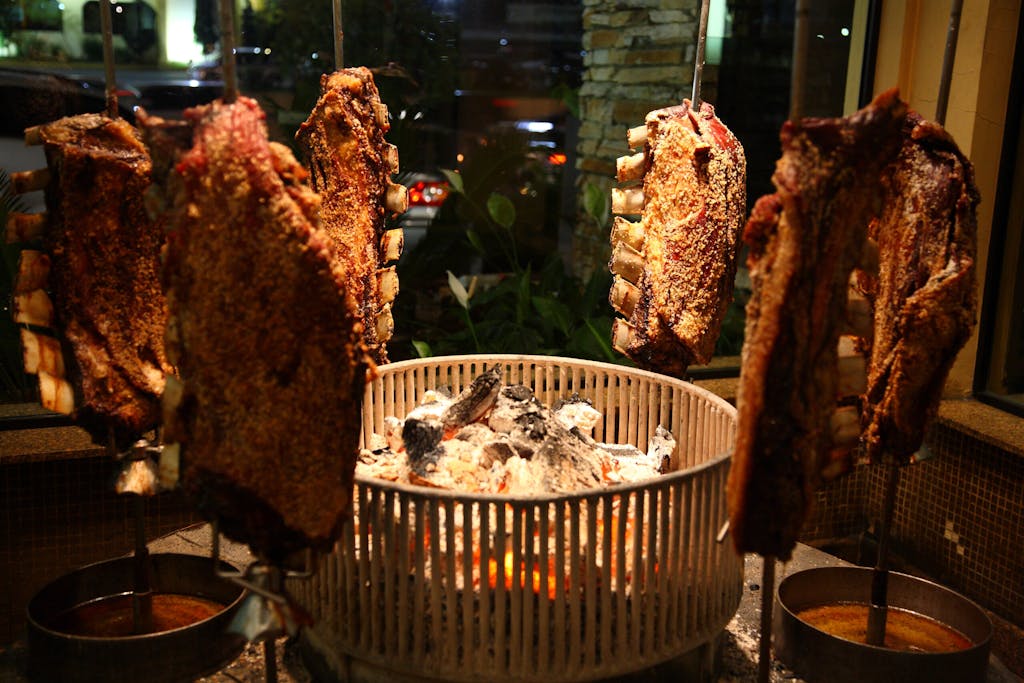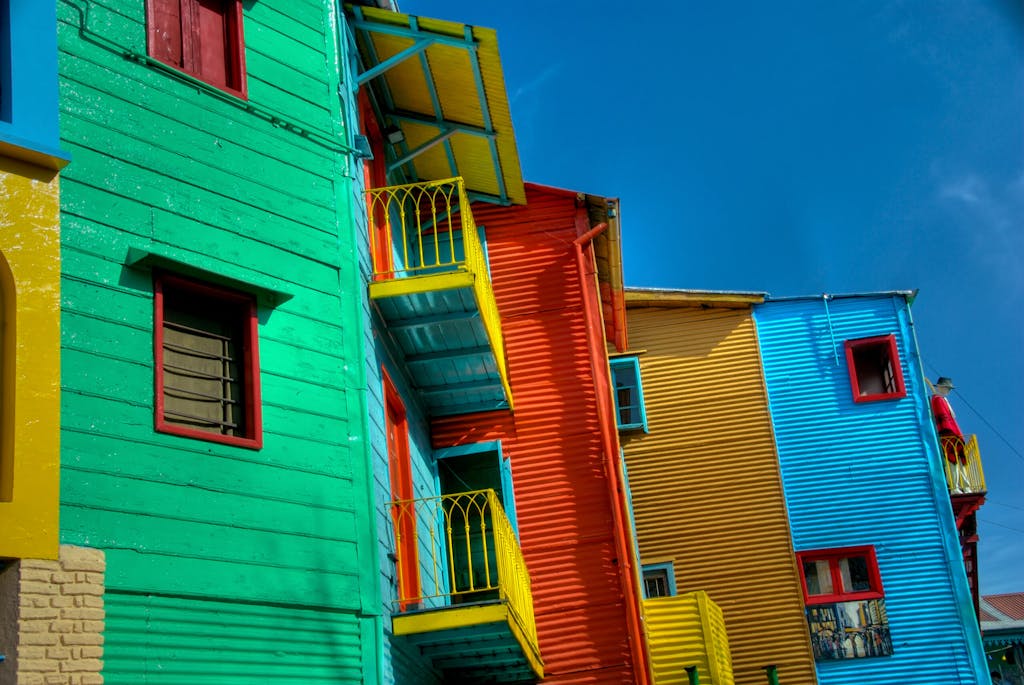On a South American Meat Odyssey, a Thick-Cut Steak Is Love at First Bite
I’m watching a master craftsman at work.
His theater is a fire pit, but he’s not a blacksmith.
His tools are carbon steel, but he’s neither a carpenter nor a surgeon.
He calls on many of the skills and much of the artistry of those trades, but the cook at La Otra Parrilla in Montevideo, Uruguay, is a barbecue chef, and, as I’m about to find out, a world-class artisan.
Stationed beside a special grill, he has in hand sharp knives and sturdy tongs and is shepherding an array of meats lined up on the cast-iron grate over shimmering coals that have been raked from a roaring fire at the base of the back-wall chimney.

At the suggestion of Joseph our waiter I’ve ordered a steak called pulpa, which he says is basically bottom round. In my experience, round steak is better than boiled boots, but not much. He assures me it is his favorite and not only the best on the menu but also the Uruguayan standard, like brisket at a Texas barbecue.
I decide to try it. Maybe I’ve just never had it cooked right.
Trust the experts, yes?
Yes.
Smoke and fire

My travel companion, my nephew Ivan, has ordered a rib steak, which we are told comes second in the panoply of Uruguayan grilled beef.
Our meal in Uruguay is just a third of our South American meat odyssey. If you’re seeking the centerpiece of life in Brazil, Uruguay and Argentina, fire-cooked meat, mostly beef, is it. Not only does it infuse life in eastern South America, but its preparation also suffuses the air itself, which carries the tang of wood smoke in city and country.
About 20 minutes later, the smoke, fire and expert cookery produce a memorable meal that Ivan and I concede may be the best steaks we’re ever had.
Mine has the robust, hefty savor and ropy texture of brisket. But it’s tender (cook a brisket over direct heat and you usually get something akin to canvas) and smolders with taste and aroma that arouse a satisfaction that was clearly programmed in my genes a hundred generations back.
Is it the meat? The smoke, the fire, the cooking, the wood?
All of the above. The wood, the chef tells me, is coronilla, a thorny, dense native tree (Scutia Buxifolia) similar to mesquite but that comes from Cerro Espinillo, in the northwest corner of Uruguay.

The meat is grass-fed Hereford; feed-lot beef is almost unknown in Uruguay, which is 78 percent pastureland and nearly geographically perfect for cattle.
The pulpa is cut 2 inches thick, as is Ivan’s rib steak, much like what is known in the U.S. as “cowboy ribeye,” a desirable cut because thick steaks cook better.
These distinctions matter immensely in the beef capital of the world. Argentina, Brazil and Uruguay hold prominent positions in world rankings of beef consumption, according to the United Nation’s Food & Agriculture Organization; all three countries are in the top five, along with Australia and the U.S., with annual per capita consumption of 88 to 110 pounds. In the U.S., beef cattle yields about 500 pounds of meat, statistics show.
Beef is king but customs change from country to country

Although reverence for beef marks all three countries, the dining experience is slightly different in each. The famous Brazilian churrascarias offer bounties of fire-cooked meat that diners select from skewers borne by servers who walk around the room as if at a Roman banquet.
Choose your meat morsel, devour it and ogle the next offering as it goes by. Chicken, pork, lamb and fish appear, but beef is the mainstay.
This onslaught of meat is similar in kind, if not execution, to the German schlachtplatte, a platter piled with mountains of beef, pork and lamb cutlets, chops, sausages and chunks, with a few potatoes tossed in for meat-relief, none of it cooked over a flame.
Don’t dismiss the vegetables
As in Germany, in Brazil and Argentina, the vegetables are secondary, although at A Figueira Rubaiyat in São Paulo, Ivan and I are pleasantly surprised by the delicious hearts of palm that come with our cutlet plates.
No passing skewer-clad servers prowl Rubaiyat, so it’s not a full-on churrascaria.
The same is true in Buenos Aires, where one can order a meat platter a la carte and receive an assortment of chops, steaks and ribs piled high to share.

At Cantina Patio la Boca in BA’s famously colorful Caminito street neighborhood, the meat platter is accompanied by a delightful tureen of pureed pumpkin, which Ivan and I agree is as good as the fire-cooked cutlets and ribs. Even as good as the choripán (chorizo on a baguette, a midday staple) we’d had for lunch the day before at a small San Telmo neighborhood three-table cafe.
Wait a minute? Delicious pumpkin? After a week in South America, were we meat-weary?
“The only time to eat diet food,” Julia Child once said, “is while you’re waiting for the steak to cook.”
In South America, no need for diet food while you wait. In Argentina and Uruguay, meals begin with a basket of bread and a dish of chimichurri, the fragrant, grassy, parsley/garlic sauce that locals apply to seemingly everything, especially bread and steak.
This marvelous custom has spread from its origins to nearly every South American country, which is why from the start Ivan and I discovered we could not conserve even a large batch of chimichurri long enough for the steaks to arrive. No matter. More is available whenever the server comes by and asks whether we need anything.

The hearty, aromatic character of chimichurri typifies the dining experience in Argentina, Brazil and Uruguay. And in Montevideo, our favorite stop on our odyssey, the outdoor tables on the sidewalk outside La Otra Parrilla magnify the ambience to near-epic proportions.
The redolent coronilla smoke from the parrilla, or grill, inside wafts along the street like invisible dinner perfume. Leafy trees cast cinematic shadows under the streetlights. Local residents stroll by, greeting one another and deciding to spontaneously grab a table and have supper.
“Well, how was it?” Joseph asks when we’re done, knowing full well what the answer would be. “Need anything else?”
A treasured Uruguayan saying is “One bird in the hand is worth a hundred flying away.” So we ask for a reservation the next night, same table, same meal, same time. Sure, there are other restaurants in Montevideo — many — but this bird is well in hand already.
Lifelong journalist and editor Eric Lucas lives on a small farm on an island north of Seattle, where he grows organic hay, garlic, apples and beans—and is trying to get pulpa from his local butcher. Learn more at TrailNot4Sissies.com.
